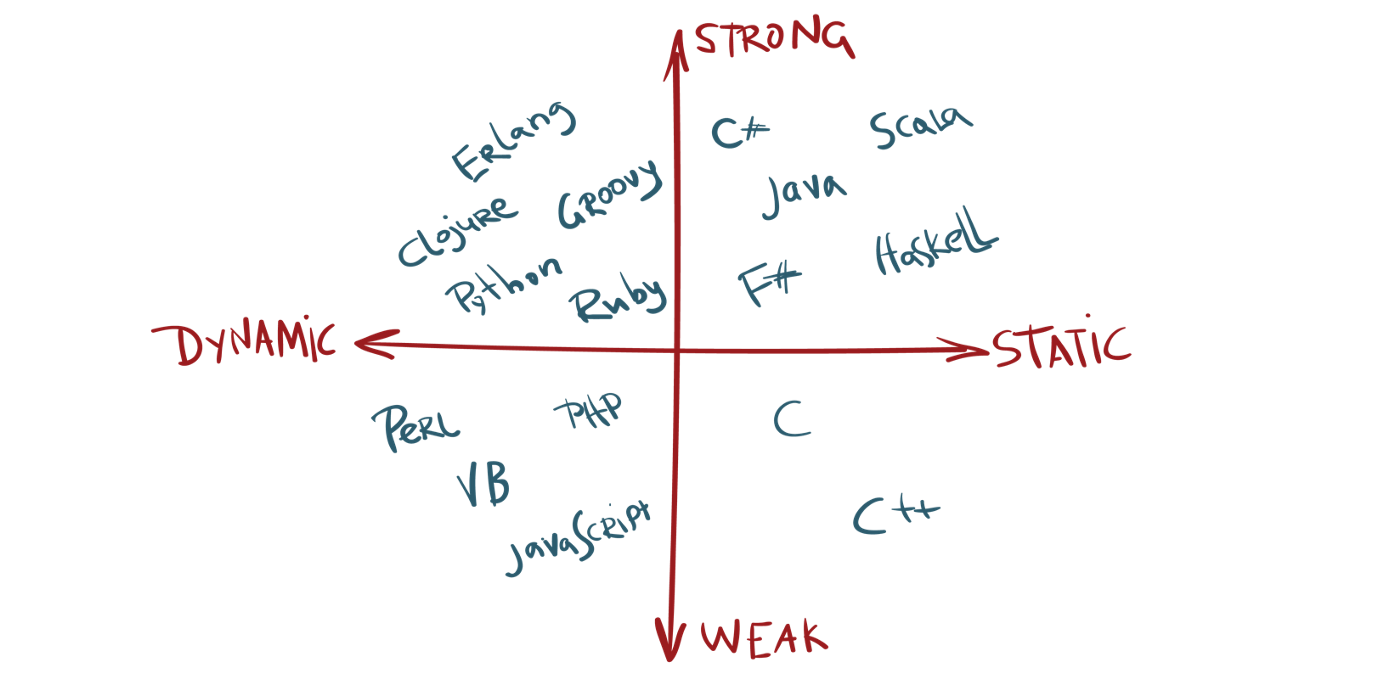Statically v. dynamically v. strongly v. weakly typed languages
Statically vs. dynamically typed
Statically-typed programming languages do type checking (i.e., the process of verifying and enforcing the constraints of types on values) at compile-time, whereas dynamically-typed languages do type checks at runtime.
Examples
Statically-typed: C, C++, Java.
Dynamically-typed: Perl, Ruby, Python, PHP, JavaScript.
The Language Cloud. Image Source : Mayank Bhatnagar
Strongly vs. weakly typed
Weakly-typed languages make conversions between unrelated types implicitly; whereas, strongly-typed languages don’t allow implicit conversions between unrelated types.
Python is a strongly-typed language:
var = 21; #type assigned as int at runtime.var = var + "dot"; #type-error, string and int cannot be concatenated.print(var);
JavaScript is a weakly-typed language:
value = 21;value = value + "dot";console.log(value);/*This code will run without any error. As Javascriptis a weakly-typed language, it allows implicit conversionbetween unrelated types.*/
